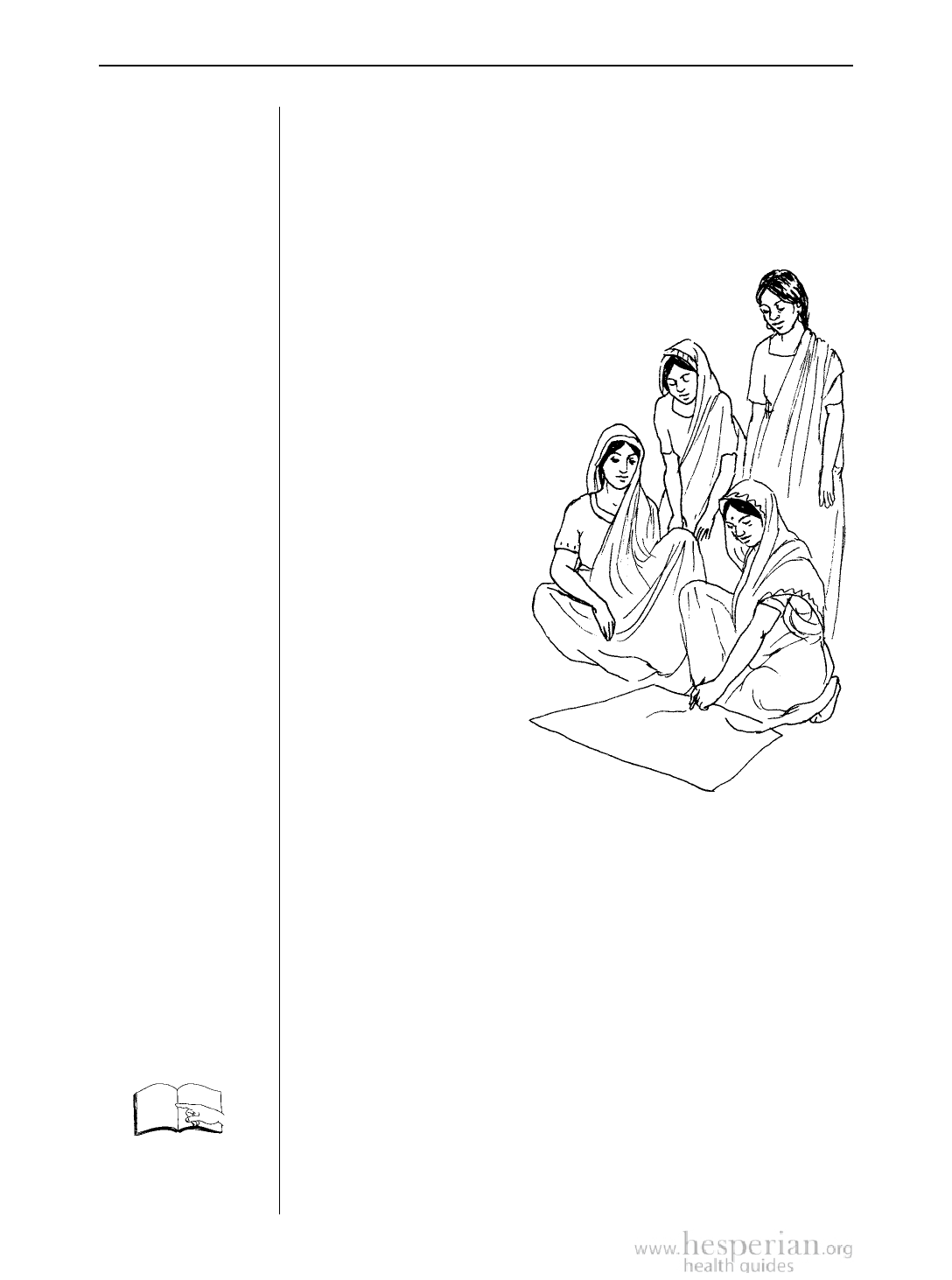
428 Mental Health
➤ If you tell a story
about a problem, it
is important to also
talk as a group about
ways to overcome the
problem.
➤ If a group has
lived through a
trauma and enough
time has passed, they
can analyze their
own experiences
rather than creating
a story.
3. Creating a story, drama, or painting. The group can
make up a story about a situation similar to those
experienced by members of the group. The leader starts
the story, and then another member continues to tell
another part—and so on until everyone has contributed
something and the story is complete. (The group can
also act out the story as it is told or paint a
picture of the story.)
Then the group analyzes the different
ideas that have been developed.
These questions can help people
begin to talk:
• What feelings or
experiences are most
important in this story?
• Why did these
feelings occur?
• How is the person
coping with these
feelings?
• What can help
her develop a
new balance in
her life?
• What can the
community do
to help?
28
organizing to solve
community health
problems
4. Creating a picture of your community. This exercise
works best after the group has been meeting together for
a while.The leader first asks the group to draw a picture
of their community. (It may help for the leader to draw a
simple picture to get things started.) Then the group adds
to the picture, drawing in those parts of the community
that contribute to good mental health, and those that
cause mental health problems.
Then the group studies the picture and starts to think
about ways to improve the community’s mental health.The
leader can ask questions like these:
• How can we strengthen those parts of the community
that now contribute to good mental health?
• What new things need to be done?
• How can the group help bring about these changes?
Where Women Have No Doctor 2012